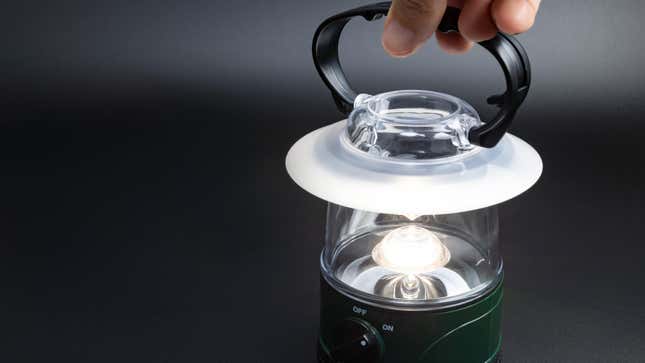
Blackouts are basically inevitable. Unless your home is solar-powered, you can expect to be without electricity for a short period at least once a year (more often and for longer if your area tends to experience severe weather).
While there are a few things that would make an extended blackout more tolerable, one key step to preparing for any power outage is ensuring you can light your home when it’s dark. Since you’ll be relying on battery-operated and/or solar-charged devices, it pays to plan ahead so you have lumens available when you need them.
Note that you should also check battery charge levels regularly—whether that’s a removable battery or one built into the device itself—as well as have spare batteries on hand. Batteries do drain (and can corrode) over time, and battery-operated lights won’t do you much good if they’re dead.
The best lights to survive power outages
Here are the lights to have on hand in case your power goes out, according to members of the prepping community on Reddit:
- Flashlight: A flashlight is the most fundamental lighting option for your emergency kit. Flashlights are bright and portable and generally can be counted on to last through an outage. Keep several on hand and make sure you check the batteries regularly.
- Headlamp: Even if you have flashlights, a headlamp can be helpful for illuminating things hands-free. You can find headlamps that take regular batteries or that are rechargeable (just make sure you plug it in on occasion).
- Camping lantern: Battery-powered LED camping lanterns can offer varying brightness with an extended battery life, and some can even charge devices like phones. Some use regular batteries, while others must be plugged in via USB and charged up before use. Some can also be charged manually via crank.
- Solar lantern: Some camping lanterns can also be solar charged. Like ensuring batteries are juiced up, you’ll also have to plan ahead and put these devices outside so they can store energy before use. You can also bring the solar lamps from your yard or garden inside.
- Tap lights: Battery-operated tap lights are a convenient and relatively cheap option for illuminating your home during a power outage. They’re portable but also adhesive so can be placed anywhere. Note that battery life varies.
- Step lighting: Permanent stair lighting that relies on your home’s electricity but kicks into battery mode when the power goes out can be helpful for frequent outages. Alternatively, you can get adhesive, motion-sensing lights that are similar to tap lights but don’t require an electrician to install.
- Emergency lightbulbs: If you have outages regularly, consider swapping out the regular bulbs in your lamps and light fixtures for emergency LED bulbs, which carry several hours of backup battery charge after the power goes out. They’re not cheap, but a few could go a long way.
- Glow sticks: Glow sticks don’t provide as much light as the other options listed, won’t last as long, and can only be used once, but they can be a good backup to keep in your home emergency kit.
Of course, you can also use candles and oil lamps, but you’ll want to keep an eye on both due to the fire hazard.

